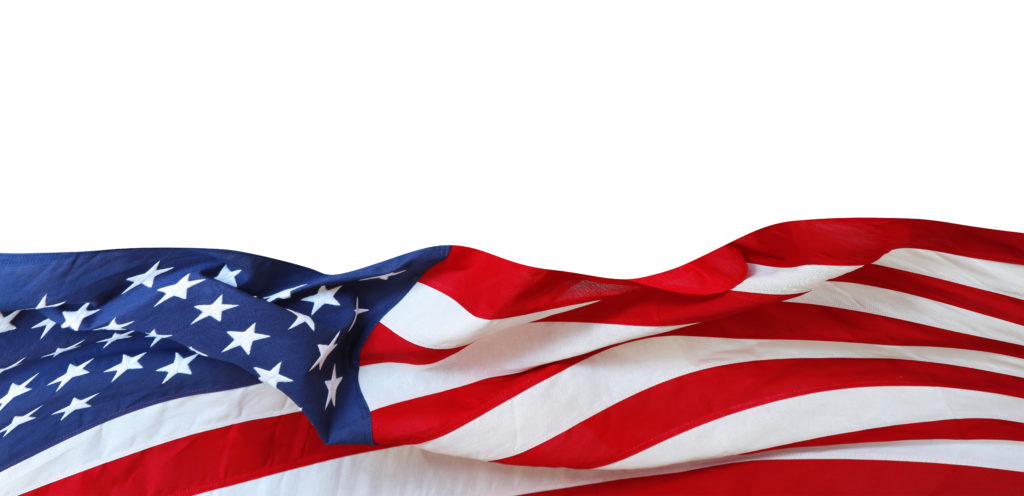Radiation-Emitting Electronic Products
Importing Radiation-Emitting Products into the U.S.
What is Radiation-Emitting Electronic Product?
FDA defines a radiation-emitting electronic product as any electrically-powered product that can emit any form of radiation on the electromagnetic spectrum. These include a variety of medical and non-medical products such as mammography device, lithotripters, tanning beds, laser toys, laser pointers, liquid crystal displays (LCDs), and light-emitting diodes (LEDs).
There are hundreds of electronic radiation-emitting products being invented and being introduced on the market every day. Most American homes have TVs, microwave ovens, DVD or Blu-ray players, and cell phones and wireless devices. Hundreds of thousands of people enjoy laser light shows every year. And most hospitals have a variety of diagnostic x-ray systems, surgical lasers, ultrasound machines, maybe magnetic resonance imaging (MRI) devices and radiation therapy systems as well.
These products are effective and low-risk when used following the manufacturer's instructions. However, they can be hazardous if not manufactured correctly. The purpose of the regulations by the Federal Food and Drug Administration (FDA) is to protect the public from hazardous or unnecessary exposure to radiation from electronic products.
In-Depth Coverage: Country of Origin
- Country of Origin of Imported Merchandise
- Customs Ruling: Country of Origin
- Country of Origin: Food Products
- Country of Origin: Chemical and Pharmaceutical Products
- Country of Origin & Country of Manufacture: CBP vs. FDA
- Country of Origin: Substantial Transformation or Country of Assembly Test
- Country of Origin and Free Trade Agreement
- Country of Origin and Section 301
To import radiation-emitting products (medical and non-medical) you should first understand what these products are and their requirements. The Center for Devices and Radiological Health (CDRH) is the FDA center responsible for overseeing the radiation-emitting products program.
Examples of radiation-emitting products
- Diagnostic x-ray systems
- Cabinet x-ray systems
- Microwave ovens
- Laser products
- Sunlamp products
- High-intensity mercury vapor discharge lamps
- Ultrasonic therapy products
Radiation-Emitting Product Requirements Verified at the Time of Importation
At the time of importation, the FDA will verify compliance with the following requirements for all radiation-emitting products:
- FDA checks the import alert database to ensure the manufacturer or product is not subject to detention without physical exam (DWPE) and listed on an import alert.
- When applicable, the FDA will verify the manufacturer, report accession number, model designation, and annual report declared at the time of entry.
It's important to note that if your electronic product is also a medical device, it would be subject to FDA's medical device requirements, in addition to our radiation safety requirements. If you're planning to market a medical device, your firm must: one, register your establishment and register the U.S. Agent for foreign firms; two, list your medical devices with FDA; and three, submit any required premarket notification or approval applications.
How can I determine specific product requirements for radiation-emitting electronic products?
Electronic products are subject to the Electronic Product Radiation Control (EPRC) provisions as defined in the Federal Food Drug and Cosmetic Act (FD&C Act), Chapter 5, Subchapter C, Sections 532 – 538. Radiation-emitting electronic products are regulated by the FDA and are required to comply with the general requirements found in 21 CFR 1000-1005. Reporting requirements for radiation-emitting products can be found in Table 1 of 21 CFR 1002.1.
In-Depth Coverage: Importing Medical Device
How does FDA verify compliance with radiation-emitting electronic product requirements?
FDA Entry Reviewers are trained to verify compliance with applicable product requirements. The FDA Entry Reviewers use the information provided to FDA in the importer’s entry transmission such as:
- Declared Manufacturer
- Product Description
- Program & Processing Codes
- Intended Use Code
- Affirmations of Compliance (A of C)
These entry declarations are compared to information in the FDA’s internal data systems. If the information matches, then compliance is verified; if the information does not match, FDA may gather additional information or may detain the product.
The submission of correct and accurate entry data along with the relevant A of C codes will help expedite the entry review process. Supplying this information accurately increases the likelihood that your shipment will be processed electronically and not held for manual review because FDA’s screening tool, PREDICT, can verify the declared information against FDA internal data systems. Submitting inaccurate or incomplete information may delay the review of your entry.
Are there additional requirements for medical radiation-emitting electronic products?
Radiation-emitting electronic products can be considered medical and non-medical products. In addition to the requirements above, radiation-emitting electronic medical products are also subject to medical device regulations. At the time of importation, the FDA will verify radiation-emitting electronic product requirements (medical and non-medical).
When do I have to submit Form FDA-2877?
Radiation-emitting electronic products subject to U.S. Federal Performance Standard require submission of Form FDA-2877, Declaration for Imported Electronic Products Subject to Radiation Control Standards, at the time of entry. Products not subject to federal performance standards do not require a Form FDA-2877 for importation into the US. At the time of importation the FDA will verify the declarations submitted on Form FDA-2877.
In-Depth Coverage: USDA-Regulated Products
- Importing USDA-Regulated Food Products
- Import Regulation by USDA Agricultural Marketing Service (AMS)
- Food Products – FDA or USDA Regulated
- Country of Origin Labeling
- Importing Animals, Animal Products, and Biologics into the US
- Importing Meat, Poultry, and Egg Products into the US
- Labeling and Marking of Imported Meat, Poultry, and Egg Products
- USDA National Organic Program (NOP)
- Agricultural Safeguards and USDA Licensing
There are four types of declarations on Form FDA-2877:
- Declaration A – Products that are not subject to radiation performance standards because they meet one of the seven statements.
- Declaration B – Products that must comply with Performance Standards.
- Declaration C – Products that do not comply with performance standards are being held under temporary import bond (TIB); will not be introduced into commerce; will be used under a radiation protection plan; and will be destroyed or exported under CBP supervision when the mission is complete.
- Declaration D – Products that do not comply with Performance Standards; are being held and will remain under bond; and will not be introduced into commerce until notification is received from FDA that the products have been brought into compliance in accordance with an FDA approved petition.
For each declaration, you must select a code that applies to your product.
Can I recondition non-compliant products?
The process of “reconditioning” non-compliant radiation-emitting electronic products may be difficult and time consuming which could result in the importer losing the product and money if the reconditioning is unsuccessful. The importer should make a serious effort to understand the FDA radiation safety requirements that are applicable to the products being imported. Reconditioning requests are submitted using the Form FDA-766.
In-Depth Coverage: Importing Cosmetics
Affirmation of Compliance Codes for Radiation-Emitting Electronic Products
Affirmation of Compliance (A of C) codes are three letter codes that can be provided at the time of import to facilitate FDA review. FDA uses A of C codes to assist in verifying that your product meets the appropriate requirements. Providing the correct A of C code reduces the likelihood that your shipment will be held for further FDA entry review during FDA’s import screening process. Submission of A of C codes is only mandatory in some instances and is not required for all scenarios. Submitting voluntary A of C codes in addition to all mandatory A of C codes may expedite initial screening and review of your entry.
Manufacturer Reporting Requirements
FDA evaluates product compliance and manufacturer quality control and testing programs by reviewing reports as needed. Depending on reporting requirements, manufacturers may be required to submit reports to FDA that describe the manufacturer, the product, its radiation safety specifications, any product labeling, and the quality control testing program in place used to ensure compliance.
In plain language, a product report tells the FDA how the product complies with the performance standard. The report must be complete and include detailed responses to all requests for information. Part 21 CFR 1002 contains specific reporting and recordkeeping requirements for product, supplemental, and abbreviated reports.
These must be submitted before introduction of the product into the U.S. market.
Many manufacturers are also required to submit annual reports to the FDA. These describe annual production levels, summary results of required compliance testing, and a summary of radiation concerns and user safety inquiries received over the year. The annual report is due each September 1st, for the prior reporting period of July 1 through June 30. An example is listed on this slide. The annual report is valid for one year.
There are three ways to submit your report to the FDA. First, you may prepare an electronic copy and submit it electronically. Second, you may prepare an electronic copy and mail that to us. And finally, you may prepare a hard copy and mail that. I'll review each method, including the benefits of some, so you may choose the method you prefer to use.
In-Depth Coverage: Customs Valuation
In-Depth Coverage: Trade Remedies
FDA-Regulated Products and Import Requirements
- What is Food Safety Modernization Act (FSMA)?
- Prior Notice of Imported Foods
- Food Facility Registration
- Risk-Based Preventive Controls for Human Food
- Risk-Based Preventive Control for Animal Food
- Standards for the Growing, Harvesting, Packing, and Holding of Produce for Human Consumption
- What is Foreign Supplier Verification Program (FSVP)?
- Protect Food against Intentional Adulteration
- FDA Regulated Product in Foreign Trade Zone (FTZ)
- Entry Review Process for FDA Regulated Products
- Country of Origin VS Country of Manufacture
- Foods Regulated by FDA or USDA: What is the Difference?
- Label and Labeling Claims for Conventional Food and Dietary Supplements
- What is USDA Country of Origin Labeling (COOL)?
- Import for Export of FDA Regulated Products
- FDA Regulated Products in Personal Baggage or Sending by Mail or Courier
- International Mail Facility (IMF) and FDA Regulation
- Importing Biological Product Regulated by CBER
- Importing Cosmetics and Voluntary Cosmetic Registration Program (VCRP)
- Importing Drugs into the U.S.
- Importing OTC Drugs into the U.S.
- Importing Veterinary Drugs into the U.S.
- Importing Tobacco Products into the U.S.
- Importing Medical Devices into the U.S
- Importing Food Products into he U.S.
- Importing Radiation-Emitting Products into the U.S.
Customs Clearance and Import Requirements
- Entry of Imported Merchandise
- What is Section 321 Entry?
- What is Automated Commercial Environment (ACE)
- What is an Automated Broker Interface (ABI)?
- Who is Ultimate Consignee?
- What is Non-Resident Importer Program?
- Country of Origin of Imported Merchandise
- What is the Country of Assembly?
- What is the FDA's Country of Manufacture?
- Marking of Country of Origin on U.S. Imports
- What is Customs Bond?
- Reconciliation Prototype and Bond Rider
- Who Needs a Customs Broker?
- What is Customs Ruling Program?
- Classification of Imported Goods
- How is imported merchandise appraised?
- What are Import Quotas?
- What are Trade Remedy Duties?
- Antidumping Duty (AD) and Countervailing Duty (CVD)
- What is Foreign Trade Zone (FTZ)?
- What is Importer Security Filing (ISF)?
- What is Temporary Importation under Bond (TIB)
- What is In-Bond Process?
Guidance on customs & logistics solution for traditional and e-commerce importers and exporters
Importer Security Filing (ISF)
An ISF is required when cargo (ocean only) laden on vessel at a foreign port is destined for shipment to the U.S. Under ISF rule, some importing information and details regarding cargo must be transmitted to the CBP at least 24 hours before goods are loaded onto the vessel.
Customs Clearance
All goods imported into the U.S. are required to be declared to CBP. Our customs broker will help you stay in compliance with customs laws and regulations and clear your goods quickly and efficiently with our electronic Automated Commercial Environment (ACE) and Automated Broker Interface (ABI) Single Window System.
Freight Forwarding
Looking for a freight forwarding partner? To move your cargo from its current location through customs to its final destination we will partner with you to find the best way for your business. Whatever your transportation, logistics or customs clearance needs, we will do our best to customize a solution for your needs.
Warehousing & Distribution
Our warehouse facility offers great potential for serving as a regional hub with over 145,000 SF storage capacity close to Los Angeles Airport & Los Angeles/Long Beach Sea port. With our extensive experience in freight services, your import/export cargo will be handled quickly and effectively.
Section 321 Entry
Section 321 entry allows importing free of duty and tax for shipments imported by one person on one day having a fair retail value in the country of shipment not more than $800. We provide our resident and non-resident clients with dedicated ACE eManifest solutions for Section 321 entry of all modes of transportation.
Non-resident Importer Program
If you want to sell your products in U.S. marketplaces, but you are a business owner located outside of the U.S. and do not have an entity or presence in the U.S., you need to be established as a Foreign Importer of Record before your products can be imported into the U.S. We can help you.
E-Commerce
The Internet has made it easy to find and purchase items from almost anywhere in the world. Our e-commerce experts will help you find the right solution for your international transportation, customs clearance, and delivery to your final destination. We also provide value-added repackaging, warehousing and distribution services.










